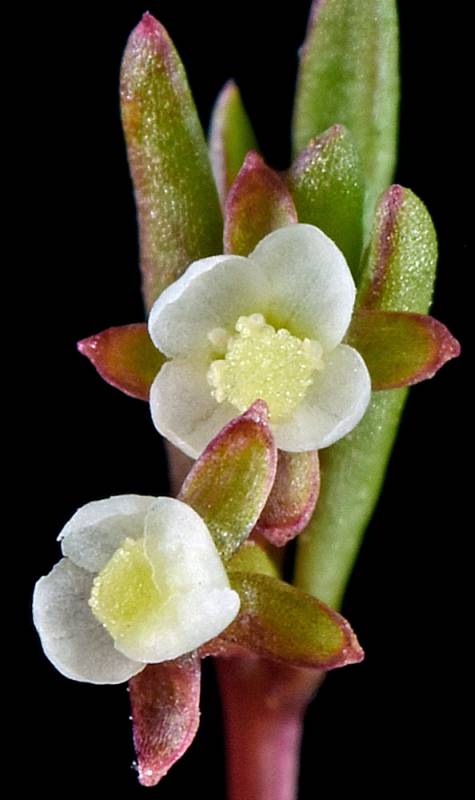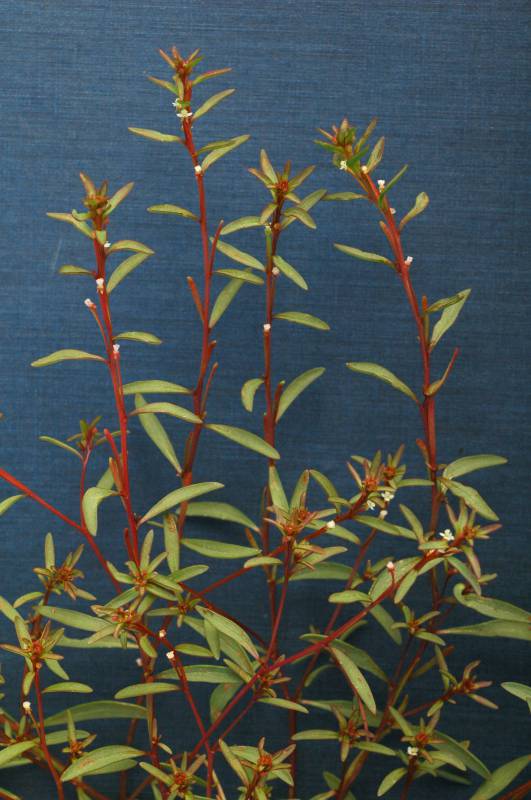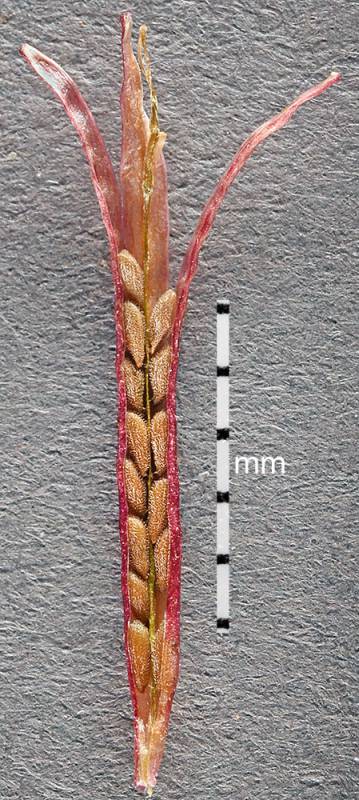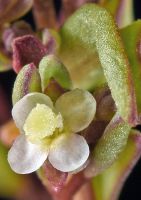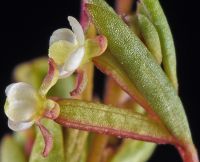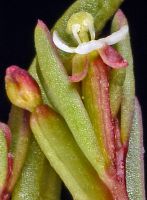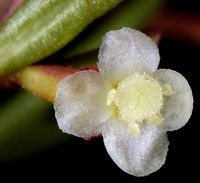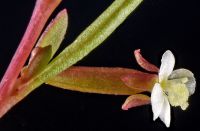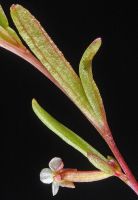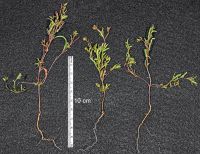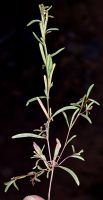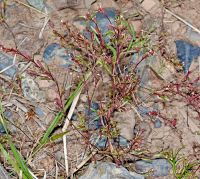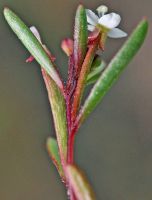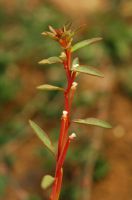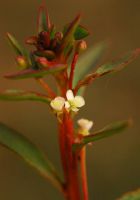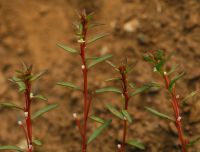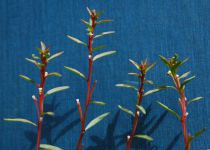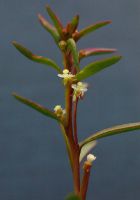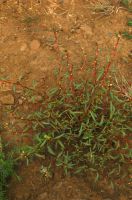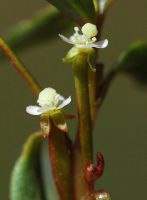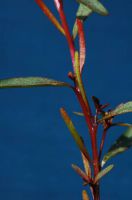Distribution: Occurring chiefly east of the Cascades crest in Washington; British Columbia to California, east to the Rocky Mountains and northern Great Plains.
Habitat: Open slopes, often where moist early, from the foothills to mid-elevations in the mountains.
Flowers: June-August
Origin: Native
Growth Duration: Annual
Conservation Status: Not of concern
Pollination: Bees, flies
Leafy, glabrous to grayish-puberulent annual, the stems diffusely branched, 5-20 cm. tall.
Leaves mostly alternate, linear, 5-30 mm. long and 1-2 mm. broad.
Inflorescence of short, terminal spikes, the floral bracts nearly as large as the cauline leaves, concealing the flowers; calyx tube 0.5 mm. long, the 4 lobes 1 mm. long, reflexed; petals 1 mm. long, white to pinkish, short-clawed; stamens 8, unequal; ovary inferior, 2-celled.
Capsule 7-15 mm. long, linear, the seeds erect in the capsule.
Publication: Fl. N. Amer. 1(3): 514. 1840.
Gayophytum helleri Rydb.
Gayophytum racemosum Torr. & A. Gray var. caesium (Torr. & A. Gray) Munz
PNW Herbaria: Specimen records of Gayophytum racemosum in the Consortium of Pacific Northwest Herbaria database
WA Flora Checklist: Gayophytum racemosum checklist entry
OregonFlora: Gayophytum racemosum information
E-Flora BC: Gayophytum racemosum atlas page
CalPhotos: Gayophytum racemosum photos

